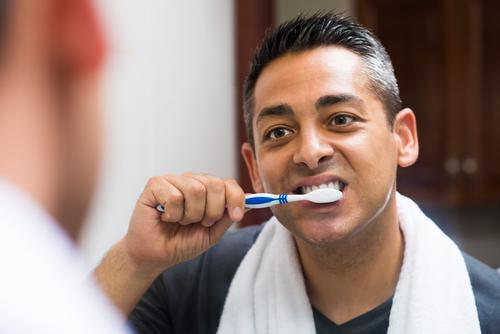You can reduce your risk of tooth decay and gum disease by following the recommendation of the American Dental Association (ADA) to brush your teeth twice a day. However, using the wrong toothbrush, brushing too hard, or applying improper technique can counter the benefits of regular brushing and lead to potential damage.
You can find out if you’ve developed proper brushing habits by having regular dental exams. By thoroughly examining your teeth, your dentist can identify problems and work with you to correct them before serious problems occur.
Emanuel Mizrahi, DDS, of Forest Hills Orthodontic Associates in Forest Hills, New York, encourages patients to establish and maintain proper brushing habits to keep their teeth and gums healthy. This is especially important if you get braces or Invisalign® aligners or want to maintain the results of whitening your teeth. Follow these five brushing habits to get the maximum benefits from your daily routine.
1. Use the right toothbrush
Like any task, you’ll get the best results from brushing if you start with the right tools. Choose a toothbrush that’s designed with a head that fits comfortably in your mouth. A proper fit will allow you to reach all of your teeth easily. You should be able to move the brush around your mouth without gagging or feeling that the head occupies too much space.
All toothbrushes become less effective over time. Matted, frayed, or bent bristles typically indicate that it’s time for a replacement.
You’ll get optimal results by replacing your manual toothbrush or the head of your electric toothbrush when you notice signs of wear, usually every 3-4 months. If necessary, mark your calendar to remind yourself to make the switch.
2. Don’t brush right after eating
If you have a habit of brushing your teeth right after eating, you may be increasing the effects of food-related acid. The acid from food stays on your teeth after you’re finished eating. When you brush your teeth immediately after eating, you can unknowingly force the lingering acid into your teeth, damaging the enamel and dentin.
Rather than brushing after a meal, the ADA advises that you wait at least an hour after eating before you brush. This can reduce the likelihood of acid damaging your teeth.
If you feel the need to clean your mouth immediately after eating, rinse your mouth with water instead. This will remove the acid without pushing it into your teeth by brushing.
3. Learn the recommended technique
It doesn’t help to brush your teeth if you don’t use the right technique. Proper form involves starting with your toothbrush at a 45-degree angle to your gums.
Apply gentle pressure as you move the brush back and forth, covering an area no wider than one tooth at a time. To clean the inside surfaces of your teeth, tilt your toothbrush vertically against your teeth. Brush up and down on each tooth using gentle strokes.
Cover the chewing surfaces, outer surfaces, and inner surfaces of all your teeth every time you brush, and try to avoid over-brushing one section and missing another.
4. Apply gentle pressure
You don’t have to apply a lot of force to clean your teeth. Aggressive brushing can lead to a damaging condition called “toothbrush abrasion.” This results when the force of the bristles is so intense that it wears down your enamel. The effect can make you more vulnerable to sensitivity, tooth decay, and gum disease.
If your toothbrush bristles appear flattened, you’re probably applying too much pressure when you brush. To achieve the right touch, try to imagine yourself “massaging” your teeth, not “scouring” them.
You can reduce the chances of developing toothbrush abrasion by using a soft bristle toothbrush or electric toothbrush head. Avoid using toothbrushes with medium and firm bristles, which can strip your tooth enamel even if you apply gentle pressure.
5. Take your time
Even if you use the right toothbrush and technique, you’ll have to brush long enough for your efforts to matter. Brushing for two minutes twice daily is the amount of time required to adequately remove the cavity-causing plaque that’s lurking in your mouth.
Many electric toothbrushes have built-in alarms that signal it’s time to stop brushing. If you’re using a manual toothbrush, use your cellphone timer to indicate you’ve put in enough time.
To learn more about proper brushing habits and how having good oral health can complement your orthodontic treatments, schedule an appointment online or over the phone with Forest Hills Orthodontic Associates today.
